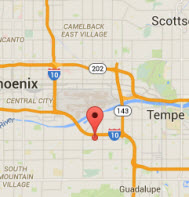Learn How To Screen Print With Catspit Productions, LLC
Screen Printing Reproductive Methods
Check out the Article Archive for great screen printing articles!!
Spot Color Printing: This is the most common form of screen printing tee shirts. This method uses the stock color of the ink without alterations by printing it through the stencil in wide open areas of the screen mesh. This will produce a very vibrant solid "spot" of color. It also tends to produce thicker layers of ink depending on the ink and the mesh count used. Printing in spot colors will be helpful in achieving opacity on darker garments. This is the least expensive to create artwork for and can also be very cost effective to print on 1 to 4 colors. When you begin to plan a design with 5 to 8 or more spot colors, a different printing method like simulated process may reduce the amount of film work and screen making needed to set up the job. Spot color artwork is great for most graphic logos that do not require gradients or excessive colors.
Half-Tone Printing: This process involves printing a single or multiple colors in gradients. Here we can take a single color of ink and make it appear as two shades or more of the same color. These tones can range all the way from a solid spot to a very fine halftone of the same color. Sometimes referred to as a "spot and dot" this method is great when you want to achieve the look of multi color printing without the expense of actually doing it. For instance, if we print red on a white shirt and include a 50% gradient of the red, the 50% gradient will "mix" with the white of the tee shirt giving the appearance of a pink color. Therefore giving us a print with red and pink but only using one screen and one color of ink. If your graphic artist knows what they are doing, you can use this technique to improve the look and quality of your graphics. It's a great effect that will reduce the number of spot colors and screens. Printing in halftones will also produce a softer feeling print when printed directly onto the garment.
Duotone Printing: This is simply the combination of two halftones for the same image printed with 2 colors. Meaning there is the black halftone printed with black ink and then we will have a second halftone which will be printed with a color ink like a warm brown for instance. The warm brown halftone combines with the black halftone which will create a duotone print which has the color hue of the warm brown halftone. This is similar to a sepia toned print in photography. This is a very cool effect to print on light garments creating the feel of a full color print but being much less expensive to do. It also has a sophisticated, artsy look. This will also produce a softer feeling print when printed directly onto the garment.
4-Color Process Or CMYK Printing: This is probably the most complex of the printing processes and is recommended for automatic presses only. Although it may be done on a manual printing press, optimum and consistent results will be achieved only on a fully automatic tee shirt press. Here we take a full color photograph or image and break it down into its four constituent colors; cyan, magenta, yellow and black. The printing process uses these four colors combined to recreate the full tonal and color range of the original image. Each color printer is a halftone of the opposite color in the original image. This system is based on what light is being absorbed.
This is so that the amount of any color showing in the final print will depend on the amount of ink laid down for each or the 3 primary colors. Cyan is the opposite of red. Magenta is the opposite of green. Yellow is the opposite of blue. The amount of blue in the final print will be directly related to the amount of yellow ink that is printed. The same is the case for the other primaries respectively. This is the most expensive process especially on dark garments. In reality only four color process printing done by lithography or similar printing processes create the traditional "rosebud" associated with process printing. CMYK printing on a tee shirt is more like simulated process in that spot colors may also be used and the dot pattern differs from that of traditional process printing where the colors perceived are mixed more in the brain rather than actually in the print. This will also produce a softer feeling print when printed directly onto the garment.
Simulated Process Printing: This combines standard 4 color process printing with spot color printing. This may also be done by printing spot colors with halftone colors which combine to create the colors of the original image. Here we use spot colors to intensify the overall look of the printed shirt. This may also be done when 4 color process printing is unable to reproduce a color the customer whishes to be dominant on the final print. As many spot colors may be added as needed but limited additions are recommended. This process can actually be more expensive than process printing because it can require complex artwork and the addition of many screens. This is most often the process used to print complex images onto black colored garments. It can produce some excellent imagery but requires some experience in artwork creation. The feel of this print will depend on the artwork and the under base if printed on black shirts.


 Screenprinting Equipment From Catspit Productions
Screenprinting Equipment From Catspit Productions


